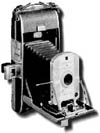 |
||
 |
||
Gallery
|
Vidicon camera tube (next to battery), 1950 |
|
|
 Dennis the Menace 1950 |
|
|
 First computer "bug," a real moth, 1951 |
 Polaroid camera Model 95, 1952 |
 TV Guide publishes 1953 |
 Playboy starts publishing 1953 |
 Blue Poles Jackson Pollock, 1953 |
 Sputnik I 1957 |
 Princess phone 1959 |
 Barbie 1959 |

Copyright © Irving Fang and Kristina Ross, 1995-1996. All rights reserved.